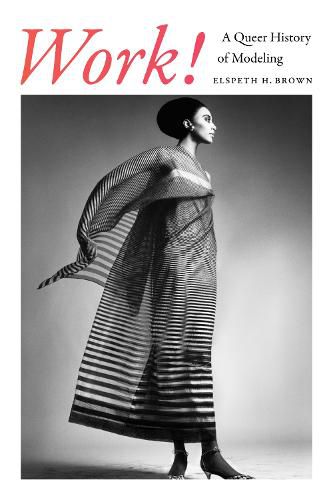Readings Newsletter
Become a Readings Member to make your shopping experience even easier.
Sign in or sign up for free!
You’re not far away from qualifying for FREE standard shipping within Australia
You’ve qualified for FREE standard shipping within Australia
The cart is loading…






From the haute couture runways of Paris and New York and editorial photo shoots for glossy fashion magazines to reality television, models have been a ubiquitous staple of twentieth- and twenty-first-century American consumer culture. In Work! Elspeth H. Brown traces the history of modeling from the advent of photographic modeling in the early twentieth century to the rise of the supermodel in the 1980s. Brown outlines how the modeling industry sanitized and commercialized models’ sex appeal in order to elicit and channel desire into buying goods. She shows how this new form of sexuality-whether exhibited in the Ziegfeld Follies girls’ performance of Anglo-Saxon femininity or in African American models’ portrayal of black glamour in the 1960s-became a central element in consumer capitalism and a practice that has always been shaped by queer sensibilities. By outlining the paradox that queerness lies at the center of capitalist heteronormativity and telling the largely unknown story of queer models and photographers, Brown offers an out of the ordinary history of twentieth-century American culture and capitalism.
$9.00 standard shipping within Australia
FREE standard shipping within Australia for orders over $100.00
Express & International shipping calculated at checkout
From the haute couture runways of Paris and New York and editorial photo shoots for glossy fashion magazines to reality television, models have been a ubiquitous staple of twentieth- and twenty-first-century American consumer culture. In Work! Elspeth H. Brown traces the history of modeling from the advent of photographic modeling in the early twentieth century to the rise of the supermodel in the 1980s. Brown outlines how the modeling industry sanitized and commercialized models’ sex appeal in order to elicit and channel desire into buying goods. She shows how this new form of sexuality-whether exhibited in the Ziegfeld Follies girls’ performance of Anglo-Saxon femininity or in African American models’ portrayal of black glamour in the 1960s-became a central element in consumer capitalism and a practice that has always been shaped by queer sensibilities. By outlining the paradox that queerness lies at the center of capitalist heteronormativity and telling the largely unknown story of queer models and photographers, Brown offers an out of the ordinary history of twentieth-century American culture and capitalism.